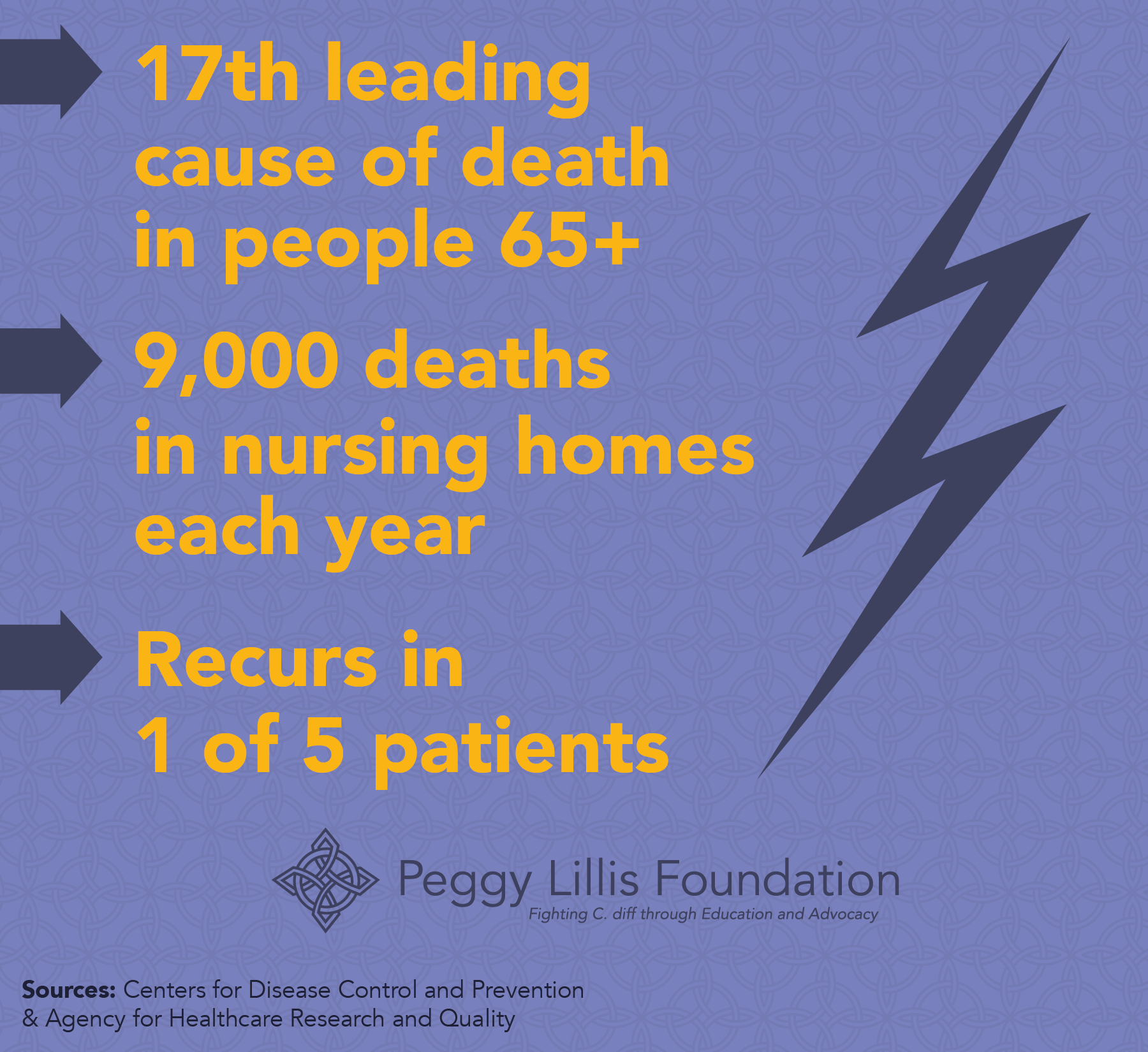Other Categories
Guest post by John Rehm, Nursing@Georgetown Online Community Manager

In 2011, infection with Clostridium difficile (C. diff) was the 17th leading cause of death for people 65 and older. This statistic from the Peggy Lillis Foundation (PLF) underscores the significant and deadly impact that C. diff infections (CDI) have on our aging population. With an array of risk factors at play, older adults experience higher rates of morbidity and mortality from CDIs than other people do. That’s why both patients and their providers—such as family nurse practitioners—must be aware of the impact of C. diff on our aging population and what steps can be taken to prevent its occurrence.
The Spread of C. diff
There are a number of factors that influence the acquisition and spread of C. diff. The two most significant risk factors for CDI are antibiotic use and being older than 65. For those in that age range, frequent exposure to the healthcare system, a weakened immune system, and changes to the chemical balance in the gut make these individuals especially susceptible.
When older individuals are hospitalized, there is more opportunity for them to be exposed to both antibiotics and C. diff spores—which respond poorly to traditional disinfection methods and may remain on contaminated surfaces and equipment for months. In addition, hospitalized older adults in frail health often require more contact with healthcare workers, who may not adhere to infection control measures appropriately and may contribute to C. diff’s spread.
These same dynamics play a role across the spectrum of healthcare—whether that be acute care hospitals, long-term care facilities, or in outpatient settings. According to 2010 data from the CDC’s Emerging Infectious Program, exposure to healthcare preceded 94 percent of C. diff infections—75 percent of which occurred in the hospital, with the remaining 25 percent assumed to be in long-term care facilities (LTCF) and outpatient care settings.
In addition to healthcare-acquired C. diff infections, community-acquired CDIs are becoming more prevalent. Defined as those that occur in individuals that haven’t been discharged from a healthcare facility in the previous 12 weeks, this manner of infection typically occurs in younger individuals. However, one study revealed that in many of these cases, individuals did have some type of healthcare exposure before infection, such as a visit to a doctor’s office.
Steps for Prevention
Although the incidence of CDI has increased significantly in the past 15 years, there are steps we can take to help reduce its occurrence—specifically by minimizing transmission and reducing the vulnerability that patients encounter. Such steps address the critical need for both antibiotic stewardship and adherence to infection control measures:
- Avoid unnecessary antibiotic exposure—especially in older adults.
- Adhere to effective methods for cleaning surfaces and equipment that patients will be either directly or indirectly exposed to.
- Require healthcare workers to follow infection control protocols consistently—including adherence to effective hand-washing techniques.
- Be on high alert for those patients who are particularly vulnerable to CDIs—which includes older adults, especially those who have had previous C. diff infections.
Although older adults often face an array of healthcare challenges, C. difficile infection stands out because it is typically acquired by exposure to a healthcare system aimed at helping rather than harming. However, by increasing awareness of the impact of C. diff on older adults and following steps for prevention, we can work together to make strides in helping to ensure the health of our aging population.



Leave a Reply